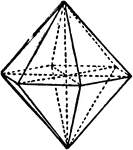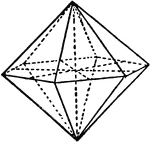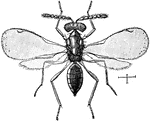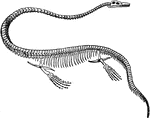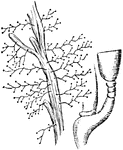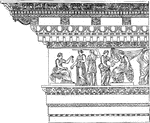
Corinthian Entablature from the Nerva at Rome
Simple styles, such as the Doric, which accorded so intimately with the whole disposition of the Grecian…
Lotus Capital
An illustration of a lotus decorated capital. In several traditions of architecture including Classical…
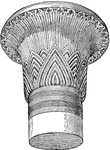
Papyrus Capital
An illustration of a papyrus decorated capital. In several traditions of architecture including Classical…

Lotus Capital
An illustration of a lotus decorated capital. In several traditions of architecture including Classical…

Persian Capital
An illustration of a Persian capital. In several traditions of architecture including Classical architecture,…

Early Greek Capital
An illustration of an early Greek capital. In several traditions of architecture including Classical…
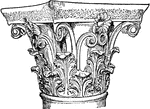
Corinthian Capital
An illustration of a Corithian capital from the Tholos of Epidaurus. In several traditions of architecture…

Byzantine Capitals
An illustration of a Byzantine capital from the central portal of St. Mark's Venice. In several traditions…
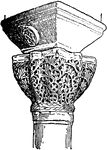
Byzantine Capitals
An illustration of a Byzantine capital from the the Church of St. Vitale, Ravenna. In several traditions…
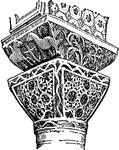
Byzantine Capitals
An illustration of a Byzantine capital from the the Church of St. Vitale, Ravenna. In several traditions…

Cushion Capitals
An illustration of a cushion capital. In several traditions of architecture including Classical architecture,…
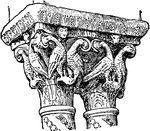
Romanesque Capitals
An illustration of a Romanesque capitals from the cloister of Monreale near Palermo, Sicily. In several…

Gothic Capitals
An illustration of a Gothic capitals from Wells Cathedral. In several traditions of architecture including…
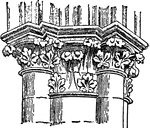
Gothic Capitals
An illustration of a Gothic capitals from from Amiens Cathedral. In several traditions of architecture…

Italian Renaissance Capitals
An illustration of Italian Renaissance capital from St. Maria dei Miracoli, Venice. In several traditions…

Temple of Theseus
The Temple of Hephaestus and Athena Ergane, also known as the Hephaisteion or Theseion, is the best…

Assassin Bug
Ectrichodia cruciata is a species of assassin bugs in the Hemiptera order of true bugs.

Elephantfish
The Elephantfish (Callorhinchus callorhynchus) is a species of fish in the Chimaeriformes order of chimaeras.
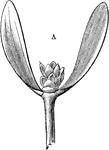
Mistletoe Flower
An illustration of the flower of the mistletoe plant. Mistletoe is the common name for a group of hemi-parasitic…

Mistletoe Staminate
An illustration of one staminate flower in section, magnified twelve times. Mistletoe is the common…
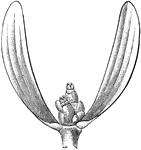
Pistillate Flowers of Mistletoe
An illustration of pistillate flowers of mistletoe. Mistletoe is the common name for a group of hemi-parasitic…
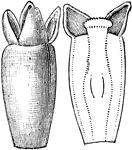
One Pistillate Flower of Mistletoe
An illustration of one pistillate flower of mistletoe. Mistletoe is the common name for a group of hemi-parasitic…
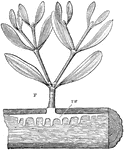
Mistletoe Attached to Host Plant
An illustration of a mistletoe plant attached to the host plant. Mistletoe is the common name for a…
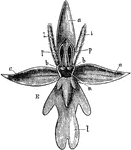
Fly Orchid
Fly orchid (Ophrys insectifera) is a plant of the family Orchidaceae, a native of the British Isles…
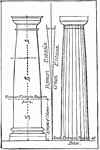
Entasis
"In architecture, the swelling or outward curve of the profile of the shaft of a column. Entasis. e…

Erechtheum
"The 'house of Erechtheus'; a temple of Ionic order on the Acropolis of Athens, noted as one of the…

Phagiochila
Plagiochila is a large, common, and widespread genus of liverworts in order Jungermanniales. It is a…

Coca
The flowering branch of the coca plant (Erythroxylon coca) best known for its use in the drug cocaine.

Coca Leaf
The leaf of the coca plant (Erythroxylon coca) best known for its use in the drug cocaine.

Escallonia
"Escallonia macrantha. Escallonia is a South American genus of trees or shrubs, of the natural order…

Noctilucales
An illustration of Noticulales with buds. The Noctilucales are a peculiar order of marine dinoflagellates.…
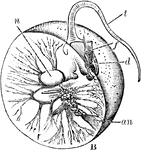
Noctilucales
An illustration of Noticulales in section: an, anus; d, denticle; f, flagellum; t, tentacle. The Noctilucales…

Noctilucales
The Noctilucales are a peculiar order of marine dinoflagellates. They differ from most others in that…

Napier's Right Spherical Triangle
Illustration of a right spherical triangle and the five circular parts placed in the sectors of a circle…
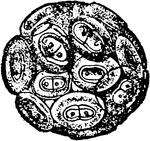
Coccolithophora
A mass of coccoliths; a marine pelagic plant of low order covered with calcereous plates. A coccolithophore…

Medusa of a Hydroid
Colonial, plant-like animals closely related to jellyfish, with stinging cells, Any member of the invertebrate…
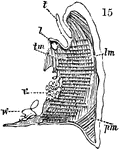
Perpendicular Section of a Sea Anemone
An perpendicular section of a sea anemone. Sea anemones are a group of water dwelling, predatory animals…

Crinoid
A modern crinoid showing steam with root or hold-fast attachment, and a crown composed of the calyx…
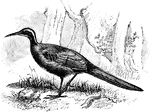
Malaysian Rail Babbler
The Malaysian Rail Babbler (Eupetes macrocerus) is a songbird in the Passeriformes order.

Pay Roll
An accountant's sheet of payroll with employee names, hours per day, and pay rate. "Wages are usually…

Bank Draft
"A bank draft is an order written by one bank directing another bank to pay a specified sum of money…

Personal Check
"A check is an order on a bank by a depositor for the payment of money; except that it is drawn by a…

Cube with Additions 2
In order to fill in the spaces from the three 2000 cubic inch additions, four new additions must be…

Fairy Shrimp
The Fairy Shrimp (Branchipus diaphanus) is a species of crustacean belonging to the Anostraca order.

Feloher from Nineveh
"One of an order of beings, the life-principles or geniuses or tutelary spirits of living beings, believed…
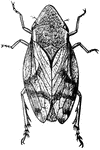
Dorsal View of Froghopper
Aphrophora quadrangularis is a species of Froghopper, an insect in the order Hemiptera.
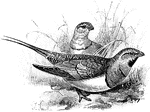
Pin-Tailed Sandgrouse
The Pin-Tailed Sandgrouse (Pterocles alchata) is a bird in the Columbiformes order.

Northern Gannet
The Northern Gannet (Morus bassanus) is a bird in the Pelecaniformes order of waterbirds. It was once…

David Glasgow Farragut
David Glasgow Farragut (July 5, 1801 – August 14, 1870) was a flag officer of the United States…

Order of the Garter Star
The star of the Order of the Garter. "Order of the Garter, the highest order of knighthood in Great…

Order of the Garter Collar
The collar of the Order of the Garter. "Order of the Garter, the highest order of knighthood in Great…

